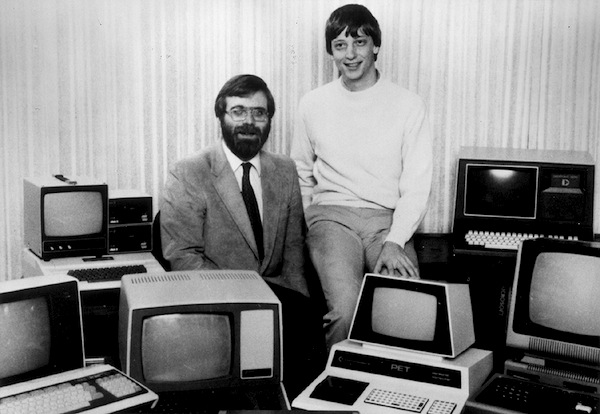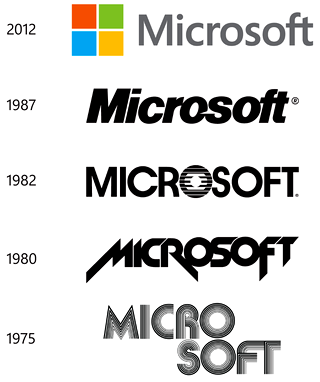Flashback Friday: How two university dropouts created Microsoft

Bill Gates is a legendary figure, and not just in the world of technology. With countless awards and titles attached to his name, he has over the years been consistently recognized as one of the world's wealthiest, most powerful and most influential individuals. Also, anybody who can call themselves a 'philanthropist' in today's world has, more often than not, probably achieved something pretty grand.
However, back in the day, Gates was merely a university dropout with a thirst for hacking computer systems. True, the university was Harvard, but Gates wasn't exactly on course to becoming the multi-billionaire entrepreneur he is today.
As a schoolboy, he and his friend, Paul Allen (who was three years his senior) were a pair of whipper-snapping computer geeks, in an age where computers were pretty difficult to come by. According to Microsoft's website, the "two young computer enthusiasts ...[saw] that personal computing [was] a path to the future". If you believe that the storyline was so straightforward, you'll probably also think that the NSA does indeed have our best interests at heart or that the latest iPhone is indeed the best mobile the world has ever seen.
The duo grew up in Seattle and created their first joint-venture in 1972, called Traf-O-Data, which was used for tracking and analyzing traffic. The system was so effective that they even managed to sell a computer to the City of Seattle.
SEE ALSO:
- Remembering Paul Allen
- Microsoft co-founder Paul Allen dead at 65
- Paul Allen's tell-all memoir: Microsoft cofounders clashed over style, money
Upon leaving school, Gates and Allen tried to go down the route of most school-leavers: Allen went off to study computer science at the University of Washington and Gates opted for law. Both dropped out of their respective courses, with Allen getting a job at Honeywell in Boston so that he could be closer to his friend (who was still at Harvard at the time). This, however, is when things really started to come together. Believe it or not, Allen and Gates were inspired by an article in a magazine.
After the former showed the latter a piece about Micro Instrumentation and Telemetry Systems' (MITS) Altair 8800 microcomputer in a January 1975 edition of 'Popular Electronics' magazine, the two friends cooked up a plan. Gates rang MITS, saying that Allen and himself would develop a version of the BASIC programming language. Needless to say, MITS was interested and, within eight weeks, Gates and Allen had achieved their goal.
After the pair successfully demonstrated the product to MITS in Albuquerque, the company agreed to start distributing it under the Altair BASIC name. Allen and Gates proceeded to move from Boston to Albuquerque and co-founded an organization called 'Micro-Soft' on 4 April 1975. Where exactly the name came from is a disputed matter.
It is common knowledge that 'Micro' was taken from 'microcomputer' and 'Soft' came from 'software', but whether Gates or Allen conjured up the name is a little bit murky. The most prevalent theory, at least as far as the Internet is concerned, is that of Gates referring to his partnership with Allen as 'Micro-Soft' in a July 1975 letter.
However, this story was debunked by Allen and Gates themselves in a 1995 interview. The duo told Fortune magazine:
Gates: When we signed that first contract with MITS, we referred to ourselves as 'Paul Allen and Bill Gates doing business as Micro-Soft'. I don't remember why we spelled it with a hyphen and a capital 'S'. We put a credit line in the source code of our first product that said, "Micro-Soft BASIC: Bill Gates wrote a lot of stuff; Paul Allen wrote some other stuff." We never officially incorporated until 1981.
Allen: We had talked about a lot of different names back in Boston, and at some point I said, "Well, the totally obvious name would be Microsoft".
Gates: We also had mentioned names like Outcorporated Inc. and Unlimited Ltd., but we were, you know, joking around. We talked a lot about whether we should call it Allen & Gates, but decided that was not a good idea.
Allen: Yeah. Because companies like DEC and IBM weren't named after personalities, they would have a longevity and identity way beyond the founders...
Gates: ...and it seemed like a law firm or like a consulting company to call it Allen & Gates. So we picked Microsoft even before we had a company to name.
 The company name (complete with hyphen), was registered with the Secretary of State of New Mexico by late November 1976. The following year, Micro-Soft opened its first international office in Japan, and in 1979, it moved its headquarters to Bellevue, Washington, since top programmers were generally unwilling to relocate to Albuquerque.
The company name (complete with hyphen), was registered with the Secretary of State of New Mexico by late November 1976. The following year, Micro-Soft opened its first international office in Japan, and in 1979, it moved its headquarters to Bellevue, Washington, since top programmers were generally unwilling to relocate to Albuquerque.
On 25 June 1981, the company became an incorporated business and changed its name to 'Microsoft Corporation Inc'. It's been through some drastic changes in the 30-odd years since -- Allen was unfortunately diagnosed with Hodgkin's lymphoma in 1982 and has left the company, Gates has taken a backseat role, Steve Ballmer (who Gates met at Harvard) has been and gone and Satya Nadella is now making his mark -- but has established itself as one of the most important companies in the world.
I wonder if Allen & Gates would ever have made it so big?
Republished in memory of Paul Allen who died earlier this week.
